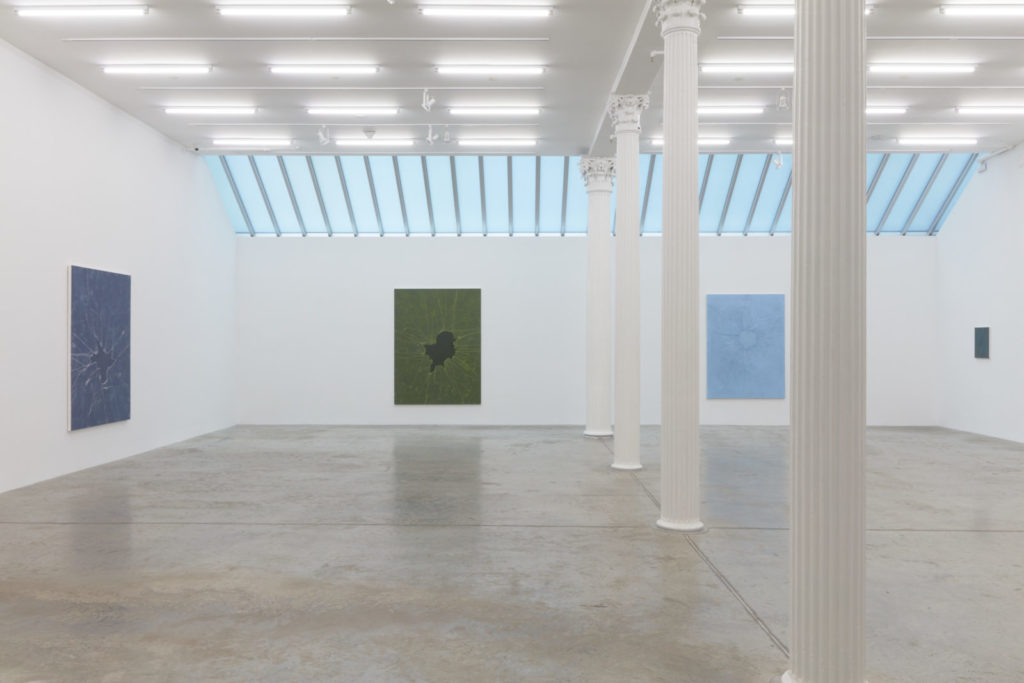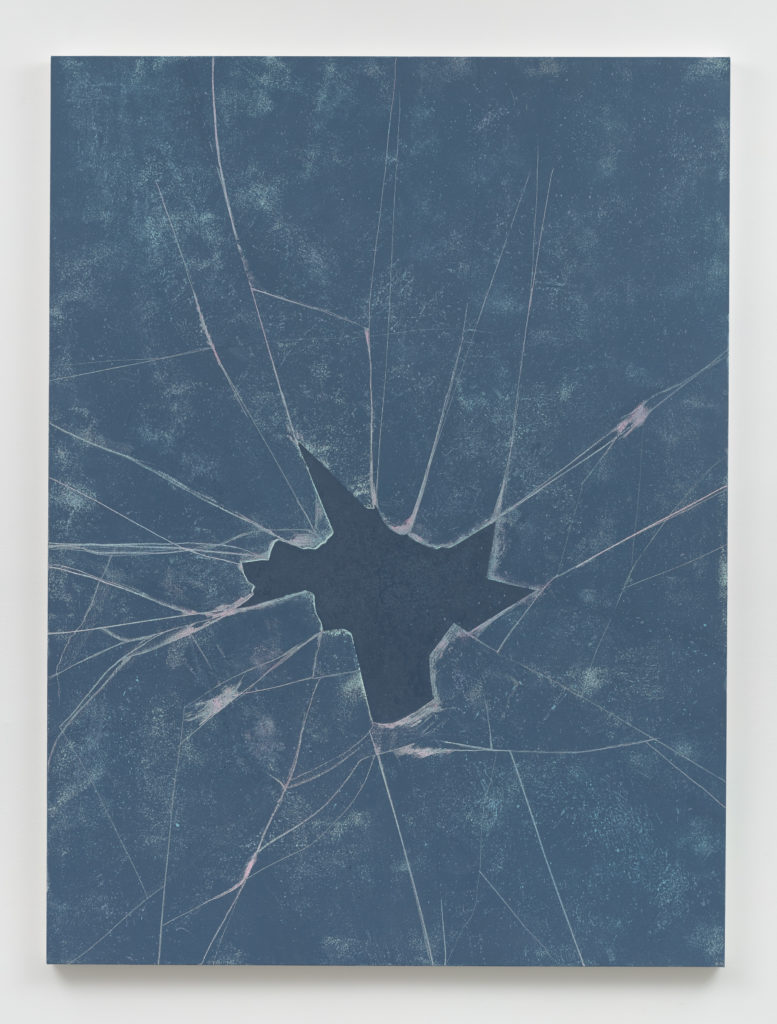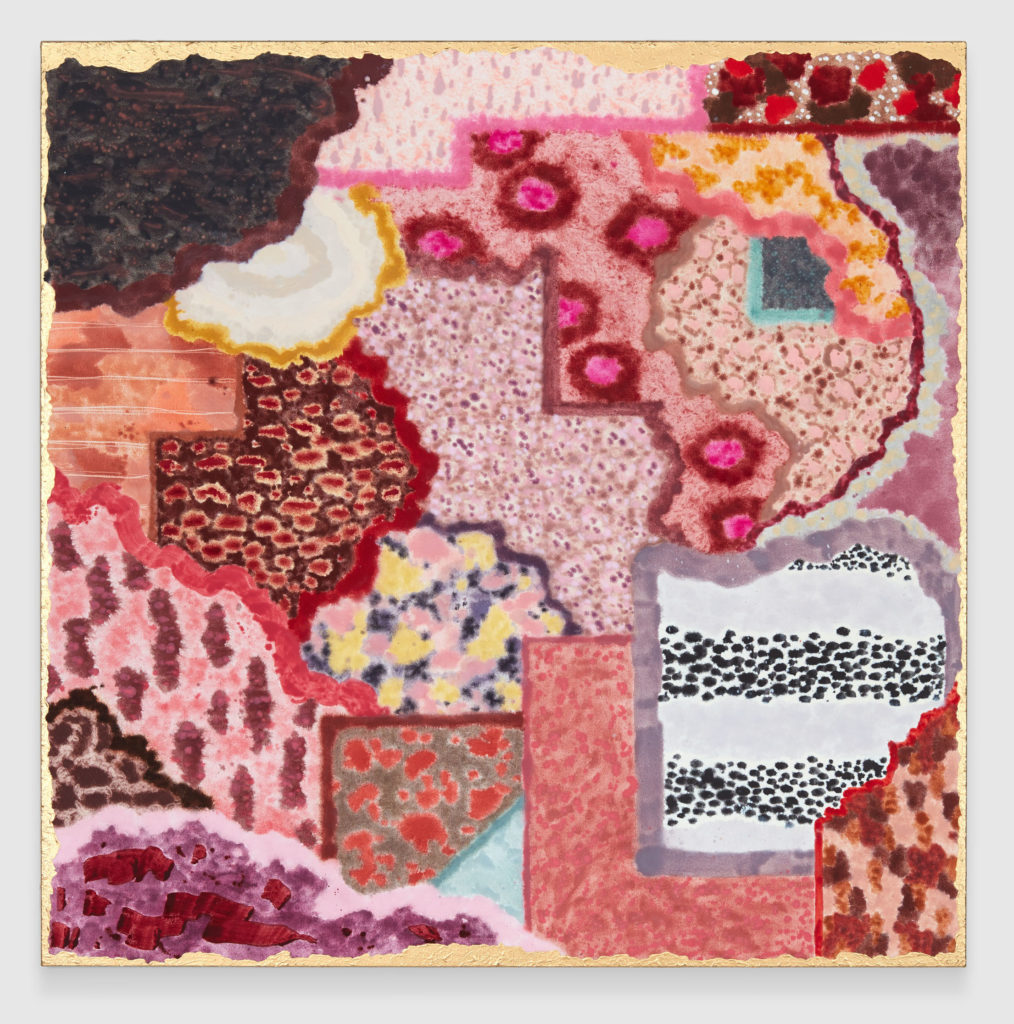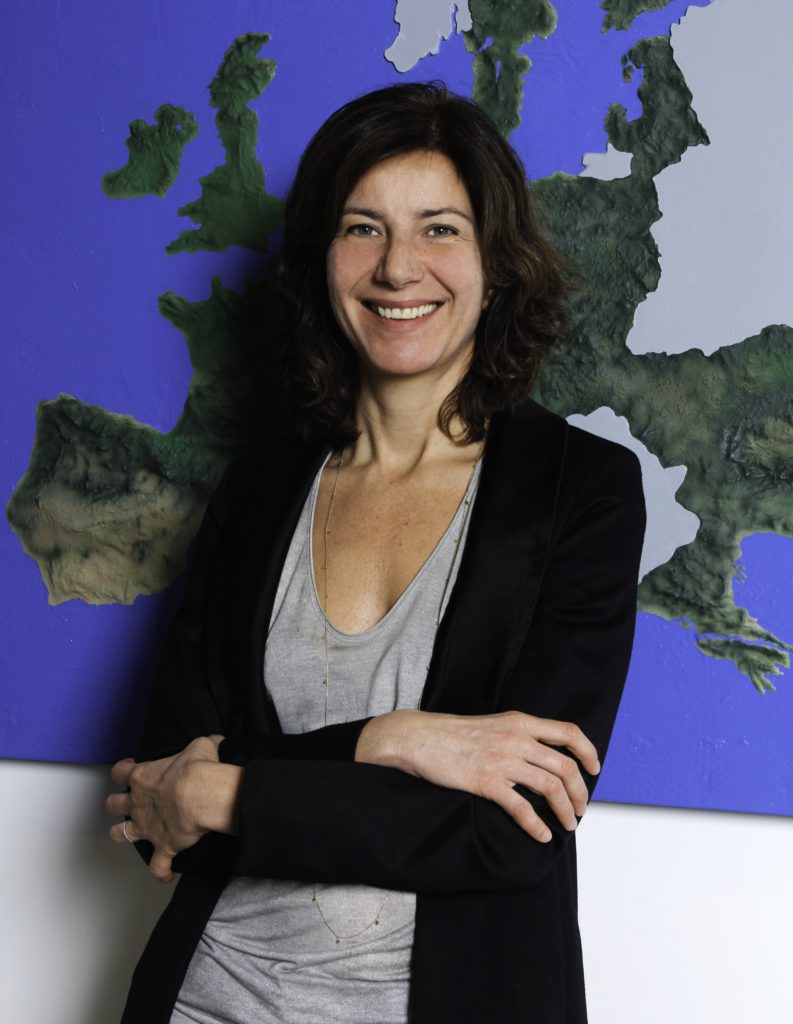When I met Stefania Bortolami at her eponymous Tribeca gallery earlier this November, she was midway through overseeing the installation of her latest exhibition, a solo show of new paintings by the New York-based artist Robert Bordo. Walking around the space, she was a commanding presence, certain of her choices and intimately alive to the sight-lines and architectural quirks of her surroundings.
The Italian-born dealer first moved to New York in 1999, drawn away from her job as a director at Anthony d’Offay Gallery in London by an irresistible offer from art-world titan Larry Gagosian. From there, her rise further through the ranks of the industry was swift. After emerging as an ace deal-maker at Gagosian, she and another Gagosianite, Amalia Dayan, left in 2005 to open a gallery of their own. The pair parted ways after two years, and the gallery thus became Bortolami Gallery.
Since then, Bortolami has become known as a dealer who is as committed to her roster of artists—which ranges from younger stars like Richard Aldrich and Anna Ostoya to such acclaimed veterans Daniel Buren, Barbara Kasten, and Claudio Parmiggiani—as she is uncommitted to the status quo, shaking up her program by regularly staging offsite exhibitions around the country as part of her Artist/City initiative.
To reflect upon a considerably eventful year in the art world, Artnet News sat down with the enterprising dealer to talk about the major trends—in art, in the art market—that Bortolami could discern in 2019, and what she predicts will occupy the conversation in 2020.
In your view, what were the most significant new directions that art took in 2019?
The phenomenon of identity politics running the art market, and not just the curatorial world. Specifically, there has been an interest in art by African Americans or Africans, which has been growing slowly but surely. Very deservedly, obviously, in the same way that art done by women that was not very much in the spotlight is now in the spotlight—though that has been happening for a few years now. There is also an increase of activism in the museum.
Why do you think all of this is happening now?
I think that the political environment around us makes all of us a bit more activist. I’m hoping that soon everybody will be shamed into not taking private planes because of the environmental problems. One thing that we have to figure out in the art world, however, is this idea of fighting against board members that we do not agree with in terms of how they make their money, like what happened at the Whitney. At the same time, artists want their artworks to be expensive and sold by big galleries that are obviously going to sell to all sorts of people. There’s not enough ‘good money’ in the world to sustain this art world. There just isn’t.
How do you define ‘good money’?
I guess if you’re a doctor and you make enough of a living to collect art, that’s good money—but a doctor cannot buy a million-dollar painting. A doctor can buy a $50,000 painting. So artists need to decide to have their paintings cost $50,000 or $30,000, and then they can complain about the ‘bad money’ that the museums take. You can’t have it both ways, because then we arrive at this incongruous moment, and I think that is something we really need to figure out in 2020.
If you go to the National Gallery in London or to the British Museum, you’ll see that most of the art from before the 20th century was made for patrons, and most of the patrons were not good people. As far as I’m concerned, there will always be rich people. And unfortunately, with growing inequality, there will be more and more people who are richer and richer, and the rest of us will be poorer and poorer. We might as well take some of their money and put it into the arts, because otherwise they’ll just golf and buy another boat.

Installation view of “crackup (crackdown)” by Robert Bordo. Image courtesy Bortolami Gallery.
Did you notice any signs this year that there’s an opportunity for positive change to happen?
There’s one thing that I’m very happy about, and one thing that I’m a little worried about. I’m happy to walk into MoMA and see the big change in terms of the representation of art by women hanging in the museum. Of course, it is just the beginning, because we’re nowhere near equal. But to go from having totally macho art to what they have now was a humongous step. It’s the first step, and they know that, and their agenda is very clear. So I’m super happy about that.
The thing that I’m a little less happy about is the market, and all this speculative interest in African art and African American art. It’s often figurative paintings of black figures—and therefore we know what it is by looking at it—and there’s enormous speculation. I’m all for people making money, both the artists and the collectors that buy 10 paintings and then sell five. Speculation is not bad in and of itself. But we have seen this story unfolding before. It starts with everyone being happy, but it ends with a group of artists being dumped like there’s no tomorrow. I must say that this is a group of people that I would really not want to see dumped.
There’s a certain cynicism that comes with the amount of money that turns in the art world that when it is applied to more vulnerable communities, I would rather it didn’t happen. There are already enough people who are saying, “Enough. No more figuration, please.” The pendulum has already started going backwards on that one.
What do you think is going to occupy the lion’s share of the conversation in 2020?
Well, the elephant in the room is the mega-galleries. It seems they are becoming these anamorphic creatures that need to be fed, and each one of them has a different strategy. David Zwirner now has gotten into the young-artist business a little bit. Pace is the new technology-artist business. Hauser & Wirth is definitely the African American- and African-art business. And Gagosian… well, I don’t know. I have a soft spot. They are the original mega-gallery.
What I’m curious about is that they keep picking up artists, because as I said, the machine needs to be fed. This big, shapeless monster needs to be fed. As long as you sell the artists it’s fine, but when the artist stops selling, they fall into the background and someone new comes along. When there are enough artists that are neglected, there is a critical moment—a tipping point, if you will. Each one of the big galleries will always have the 10 masters that will always sell, and then they need fresh blood, and when some of the fresh blood becomes unsavory and cast aside—when there are more artists neglected by the galleries than put in front of you—maybe that’s when people will finally turn against them. They will say, “You know what? I don’t want to be your fresh blood because I’ve seen what happens with fresh blood.”

Robert Bordo, crackup #14 (2019). Courtesy the artist and Bortolami Gallery, New York.
So do you think that artists are going to start to have more of a say in the market?
It’s very easy to say, “I’m going to take my work out of this museum show because there is a bad board member.” You lose nothing, whereas when you say, “No, I don’t want to sell to these people,” that’s real activism. Very few artists are going to have the guts to say no to millions of dollars, because that’s what it is.
I hope artists will have more of a say. I hope that we can go back to a moment in which artists ruled the art world and not four straight white guys. Because I think with all the fantastic women in London—Victoria Miro, Sadie Coles—and here, obviously, Paula Cooper, Marian Goodman, and Barbara Gladstone, Tanya Bonakdar, and Carol Greene… there are so many great women, but who are the people actually running the art world? Four straight white men. And right behind, kind of pedaling alongside them, is another bunch of straight white men that want to have mega-galleries, too.
Which artists are you looking forward to working with in the new year?
I’m starting a new relationship now with Robert Bordo. Rebecca Morris is going to be my first show in March, and then Renée Green. She’s an artist of the institutional-critique generation, who happens to be African American and who talks about a lot of things, including race and colonialism. She teaches at MIT and just had a show at Carpenter’s Workshop at Harvard. She does not do figurative painting—unfortunately for me. So, yes, I’m hoping that each one of these new relationships will be fantastic, and we’ll talk about it a lot.

Rebecca Morris, Untitled (#02-18) (2018). Courtesy the artist and Bortolami Gallery, New York.
How do you anticipate that the market will change in 2020?
Maybe activist collectors will only buy from medium and small galleries and turn their backs on the mega-galleries! I’m kidding. Frankly, I think there will be more of the same. It will be harder and harder for medium galleries and especially hard for the small galleries. A small gallery of three years will say, “Woah, fantastic, everyone wants my artist! The artist costs $8,000, and I’ve got a waiting list.” Then, after a few years, they’ll hire a bunch of people and get a space which is a little bigger, and then people won’t want their artists anymore more because now they cost $22,000, and so on. The mega-galleries will definitely rule the day. They’ll steal a few more artists here and there. They’ll continue growing, and feeding the beast.









